Campus Culture and Traditions
“The University gives a diploma and regretfully terminates tenure, but one never graduates from Ole Miss.” – Frank E. Everett, Jr., B.A. '32, LLB '34
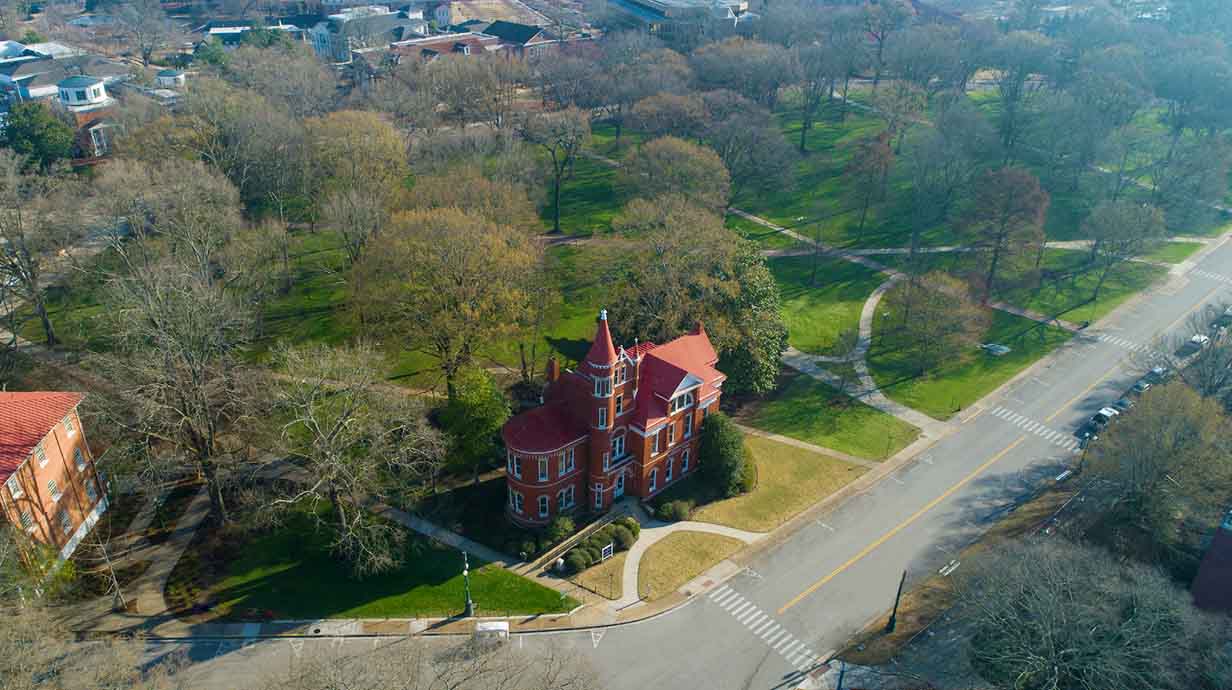
Our traditions make us unique.
Ole Miss
“Ole Miss” was the winning entry during a contest in 1896 to choose the title for the new school yearbook. Over time, the name became synonymous with the university. The name Ole Miss is now a widely recognized term of affinity and affection for this place.
The University is buildings, trees and people. Ole Miss is mood, emotion and personality. One is physical, and the other is spiritual. One is tangible, and the other intangible.” - Frank E. Everett, Jr.
Red and Blue

In 1893, the university’s first football team chose the Crimson of Harvard and the Navy Blue of Yale for its team colors. The team felt that the colors went well together, and that the spirit of Harvard and Yale would be good to mimic.
Hotty Toddy
Are you ready?
Hell yeah! Damn right!
Hotty Toddy, Gosh almighty,
Who the hell are we? Hey!
Flim flam, bim bam,
Ole Miss by damn!
It's a feeling, an ideal, a fight song, a rallying cry, a handshake and a way of life, all rolled into one. If traditions make up the fabric of Ole Miss, the thread of Hotty Toddy holds them together.
Alma Mater
The alma mater of the University of Mississippi was written in 1925 by A.W. Kahle and her husband, W.F. Kahle. For nearly 100 years, it has been sung and played at athletic events, commencement ceremonies, the inauguration of chancellors, funerals and memorials, class reunions and other special events.
The playing of the alma mater calls for a moment of respect to join in song. Those in attendance should stand (if able), remove hats or caps, and sing the words:
Way down south in Mississippi, There's a spot that ever calls.
Where among the hills enfolded, Stand Old Alma Mater's Halls.
Where the trees lift high their branches, To the whisp'ring southern breeze.
There Ole Miss is calling, calling, to our hearts' fond memories.
With united hearts we praise thee, All our loyalty is thine,
And we hail thee, Alma Mater, may thy light forever shine;
May it brighter grow and brighter, And with deep affection true,
Our thoughts shall ever cluster 'round thee, Dear Old Red and Blue.
May thy fame throughout the nation, Through thy sons and daughters grow,
May thy name forever waken, In our hearts a tender glow,
May thy counsel and thy spirit, Ever keep us one in this,
That our own shall be thine honor, Now and ever dear Ole Miss.
Fight Song - Forward Rebels
Forward Rebels, march to fame,
Hit that line and win this game,
We know that you'll fight it through,
For your colors Red and Blue -- Fight, Fight, Fight.
Rebels you're the Southland's pride,
Take that ball and hit your stride,
Don't stop 'till the victory's won,
For your Ole Miss.
Fight, fight for your Ole Miss.
The Grove
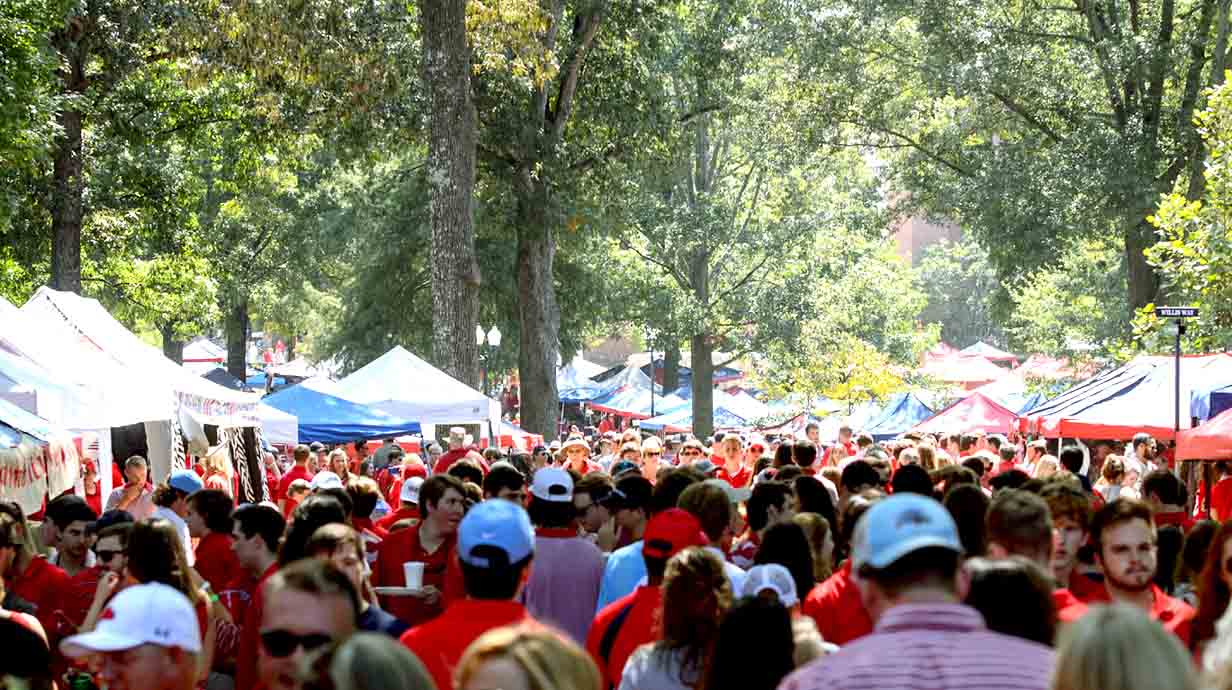
The Grove is a beloved 10-acre park in the middle of campus heavily shaded by oak trees. It’s called many things, from “the Holy Grail of tailgating sites” to “the mother and mistress of outdoor ritual mayhem.” It is simply The Grove to students and fans of Ole Miss.
“The Grove boasts a simple fact: It is the best. Rivaled by none. A bucket-list fixture for college football fans everywhere. While many other schools tailgate, not one of them does it better than Ole Miss.” -Unkown
Trash Can Friday
On Fridays before home football games, Landscape Services begins the ritual of setting up the Grove for the legions of fans that will arrive on Saturday. Early Friday morning, university staff set out thousands of trash cans and recycling bins to create a red and blue spectacle that welcomes students heading to Friday classes.
The sight of the trash cans offers social media gold as it signals that Gameday and a chance to connect with great friends is close at hand.
Manning Speed Limits
 In tribute to Ole Miss legend Archie Manning, the speed limit on the University of Mississippi campus is 18 MPH in homage to Manning’s retired jersey No. 18.
In tribute to Ole Miss legend Archie Manning, the speed limit on the University of Mississippi campus is 18 MPH in homage to Manning’s retired jersey No. 18.
He was named to the All-SEC team in 1969 and 1970 and was the Mississippi Sportsman of the Year and SEC Most Valuable Player in 1969.
Manning came in fourth and third in the Heisman Trophy voting in 1969 and 1970, respectively. He was the second overall pick in the 1971 NFL Draft, picked by the New Orleans Saints, where he played for ten seasons.
Manning was inducted into the College Football Hall of Fame in 1989. Archie is the quarterback selection for the Ole Miss Team of the Century.
Pride of the South
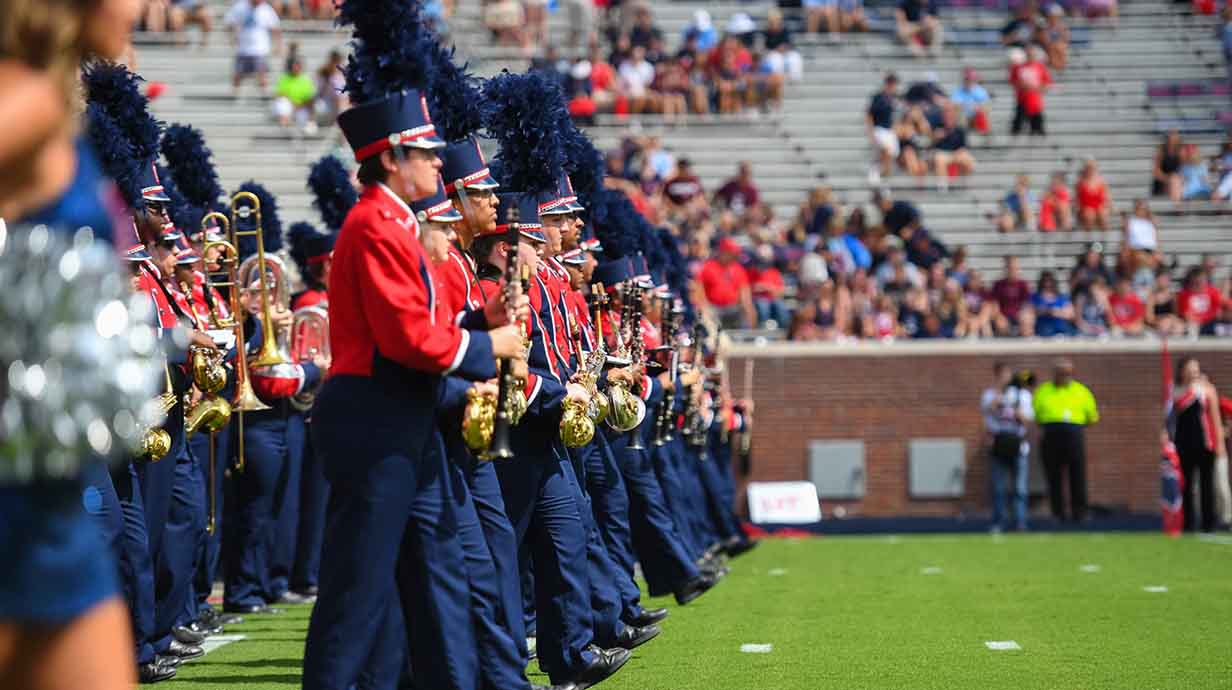 Organized in 1928, the Ole Miss Band - The Pride of the South - performs in concert and in support of Ole Miss Athletics events.
Organized in 1928, the Ole Miss Band - The Pride of the South - performs in concert and in support of Ole Miss Athletics events.
Band members come from all programs across campus like Pre-Med, Criminal Justice, Engineering, Political Science, Journalism, and many more.
The Ole Miss Band offers competitive scholarships for students of every major in the University.
Before every home game, The Pride of the South gathers at the Grove stage and performs its traditional pre-game routine.
Walk of Champions
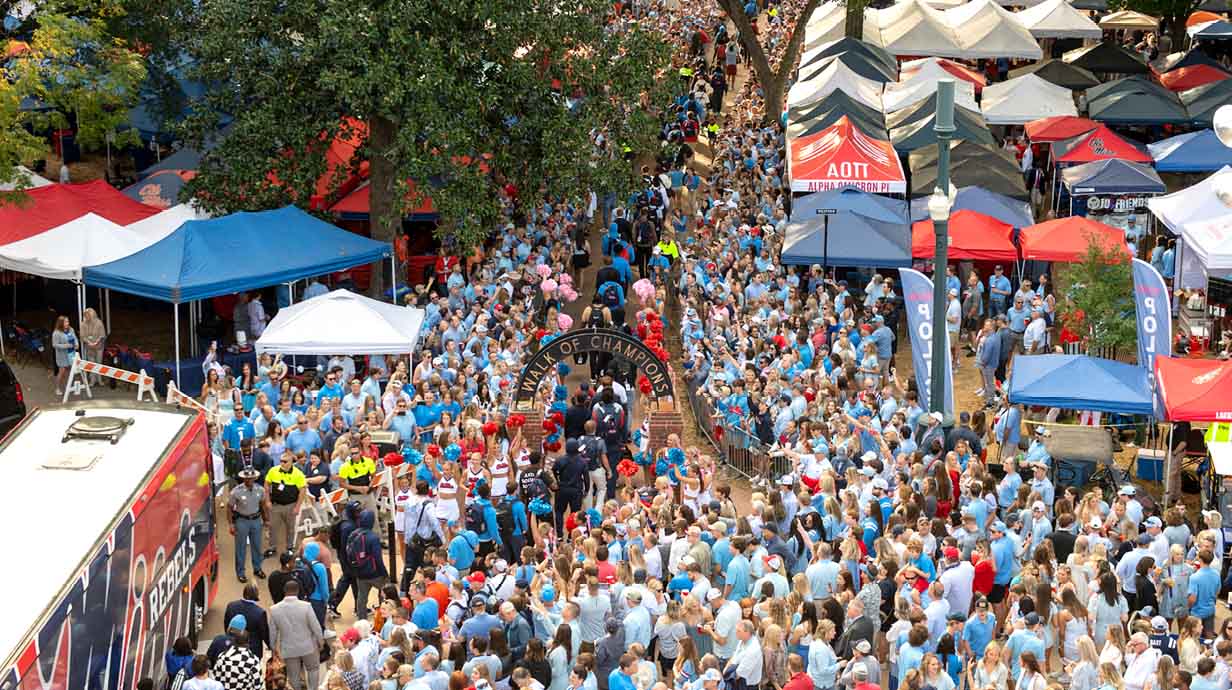 In the fall of 1998, a “Walk of Champions” arch was erected on the east side of the Grove where the football team begins its walk to the stadium two hours and 15 minutes before every home game.
In the fall of 1998, a “Walk of Champions” arch was erected on the east side of the Grove where the football team begins its walk to the stadium two hours and 15 minutes before every home game.The “Walk of Champions” arch was given to the University by the 1962 Rebel football team, which won the SEC title and was named National Champion by the Litkenhous Ratings.
Lock the Vaught
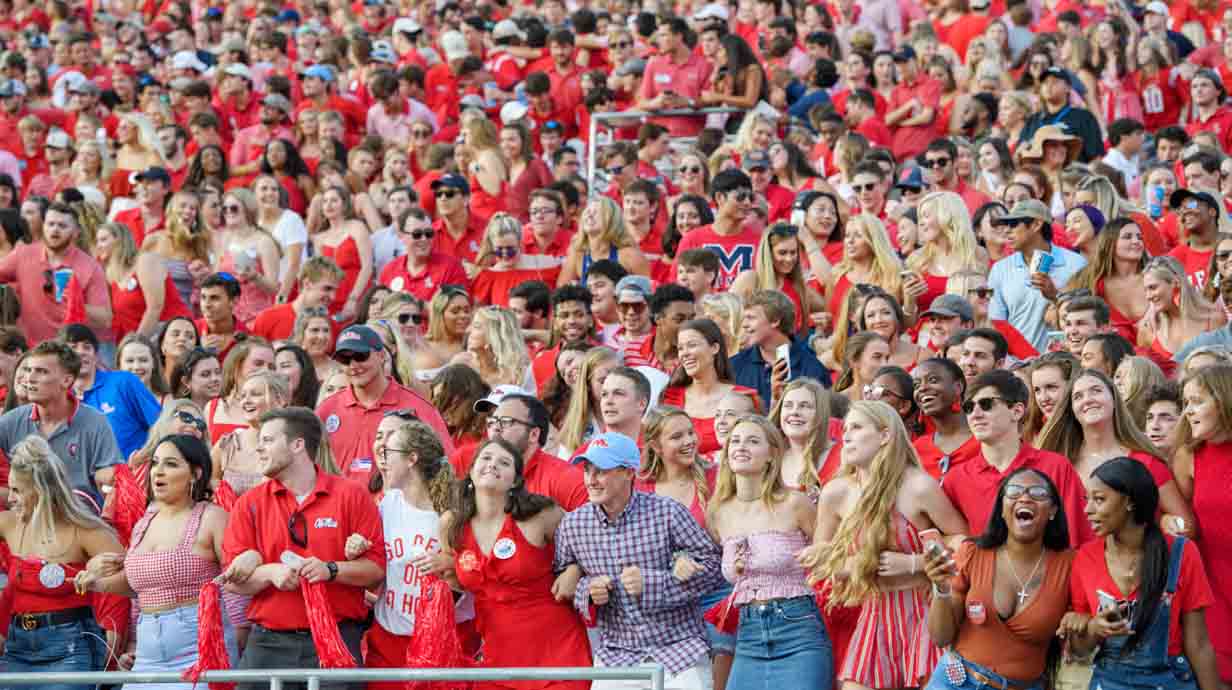 Students and fans lock arms and sway back and forth to the song Come With Me by Puff Daddy before the opening kickoff at home football games in Vaught-Hemingway Stadium. It is an intimidating display directed at the visiting team as the Rebels take the field.
Students and fans lock arms and sway back and forth to the song Come With Me by Puff Daddy before the opening kickoff at home football games in Vaught-Hemingway Stadium. It is an intimidating display directed at the visiting team as the Rebels take the field.
Home Run Showers
 The home run showers are part of the most exciting atmosphere in college baseball. Whenever the Rebels hit a home run, the students sitting in the bleachers beyond the right field fence throw whatever is in their cup into the air. Heads up!
The home run showers are part of the most exciting atmosphere in college baseball. Whenever the Rebels hit a home run, the students sitting in the bleachers beyond the right field fence throw whatever is in their cup into the air. Heads up!
Campus Culture
William Faulkner
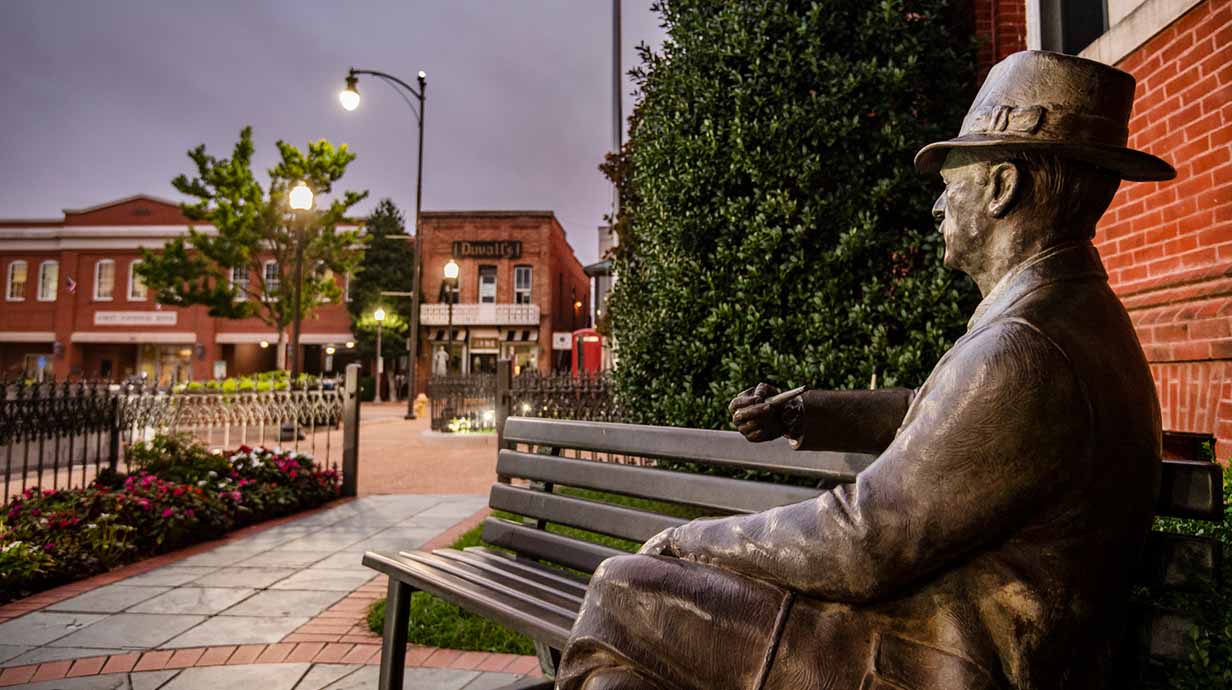
William Faulkner, winner of the Nobel Prize, the Pulitzer Prize, and the National Book Award, called Oxford home for the majority of his life. The shadow of Oxford’s literary giant still looms large even though Faulkner passed away in 1962.
Students will want to take their picture next to his statue on the Square, visit his home and walk the grounds, visit his grave, or find a quiet spot and enjoy one of his books.
Rowan Oak was William Faulkner’s home from 1930 until his death. The university now owns and operates the home and grounds as a museum. Students often relax about the grounds, pose for photographs (for a fee), or walk the popular Bailey Woods Trail that runs between Rowan Oak and the University Museum.
Falkner’s statue is located on the Square, sitting on the bench just in front of City Hall.
Faulkner’s grave is in St. Peter’s Cemetery on N. 16th Street. You can get there from The Square by taking N. Lamar Blvd., turning right onto Jefferson Ave. The cemetery is three blocks ahead on the left. Turn left onto N. 16th St. and look for the historical marker on the right just before St. Andrew’s United Methodist Church. The grave is at the bottom of the hill due east from the marker. Students and literary fans often leave gifts on the grave, including pens, pennies, and whiskey.
Double Decker Buses
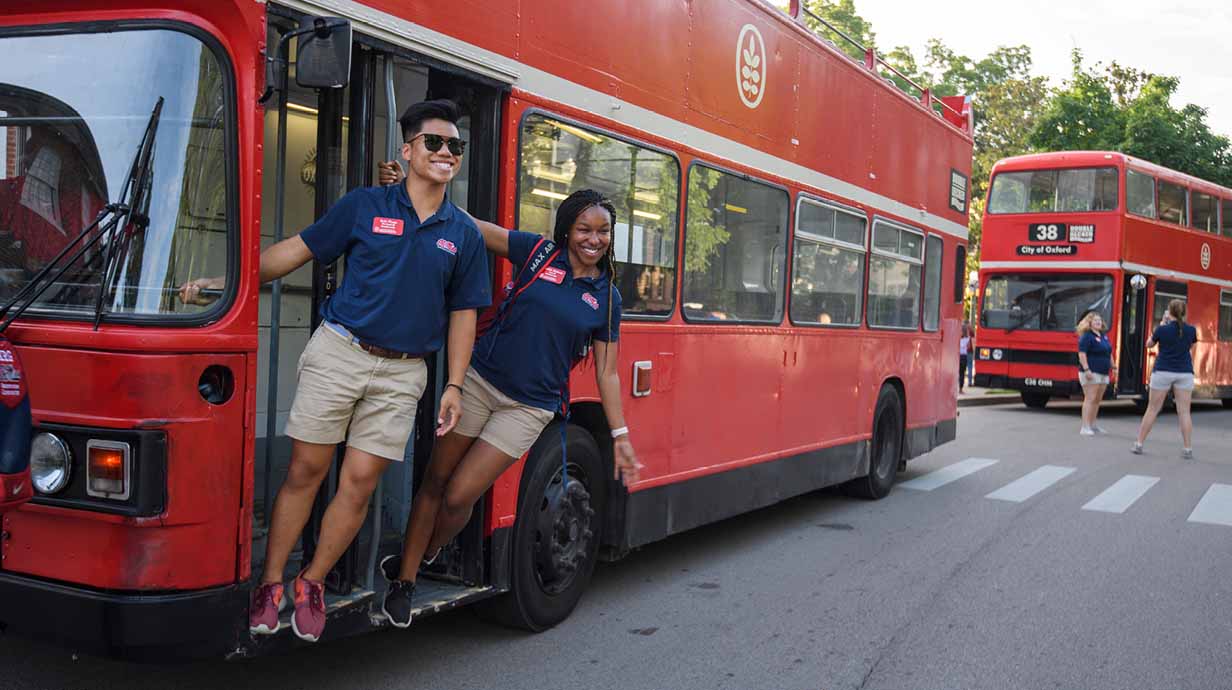
As a tribute to the prestigious British university town that inspired naming the city of Oxford, the city named its spring festival after another British icon – the red double-decker bus.
In 1994, the City of Oxford imported its first AEC Routemaster bus from England. Oxford unveiled the bus at the first Double Decker Arts Festival in 1996.
The city now owns four of the iconic bright-red buses, which are now regarded by locals as symbols of local culture.
Double Decker Arts Festival

Double Decker began as a way for the Oxford community to support the local arts, food, and music scenes.
From humble beginnings with a few food and art vendors and using the bed of a pickup truck for a performance stage, the festival has grown into a two-day extravaganza drawing crowds of more than 60,000 people.
Doorknob to the Universe
Ask someone who knows.
34.360557, -89.540355
Phi Mu Fountain
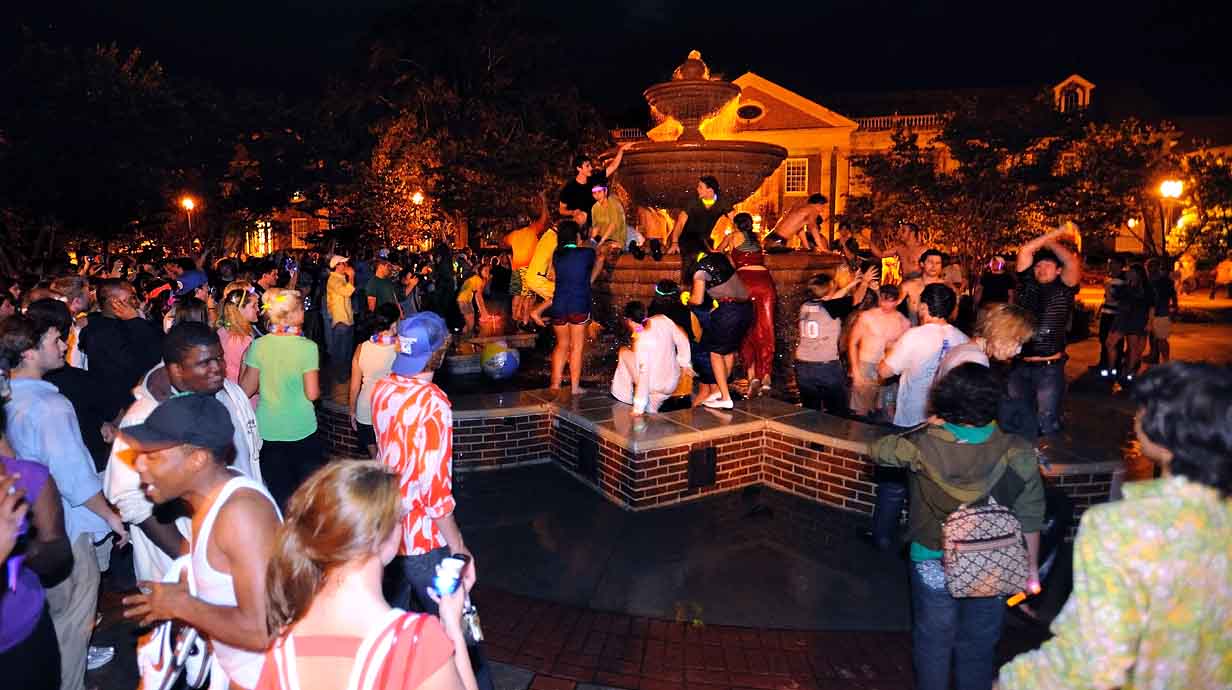
Phi Mu's Alpha Delta chapter alumnae and friends donated the fountain to celebrate the chapter's 75th anniversary.
The fountain, the centerpiece of the quad between the J.D. Williams Library and the Paris-Yates Chapel, is designed in the shape of a Phi Mu pin.
Fraternity and Sorority Life
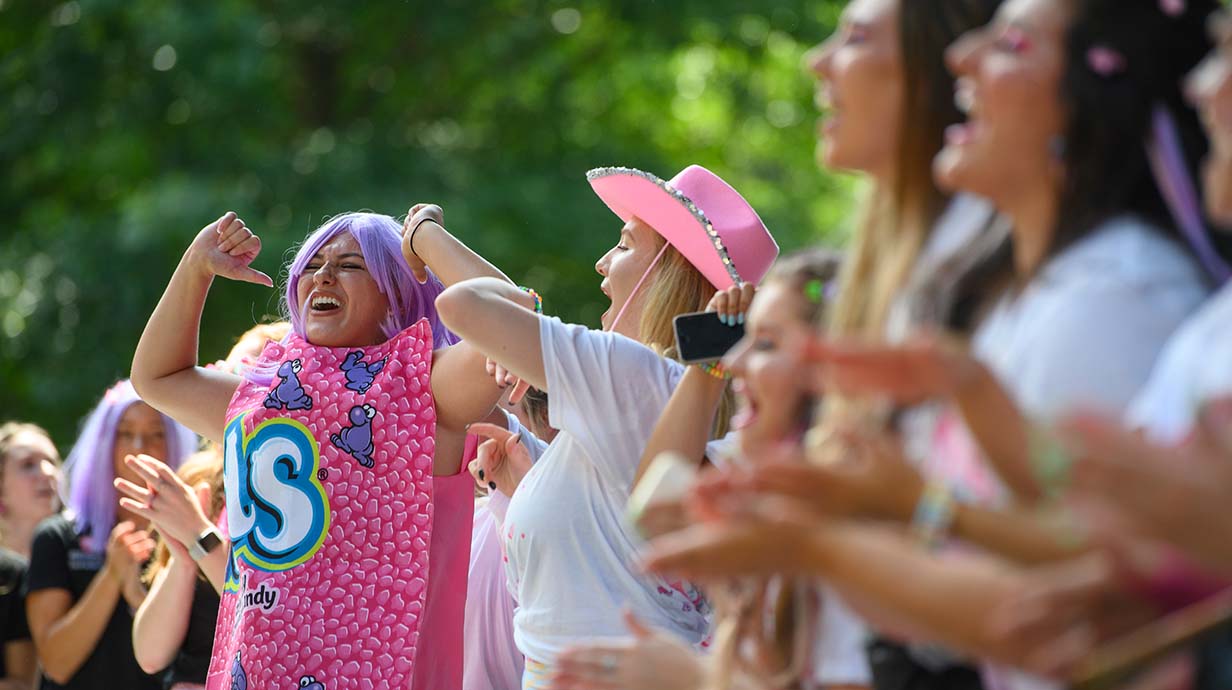
Over 6,500 students affiliate with one of 29 campus Greek organizations within the Interfraternity Council, National Pan-Hellenic Council, or College Panhellenic Council. Members come from around the country and world. See how you can join this community of scholars, leaders, and community volunteers.
Center for the Study of Southern Culture
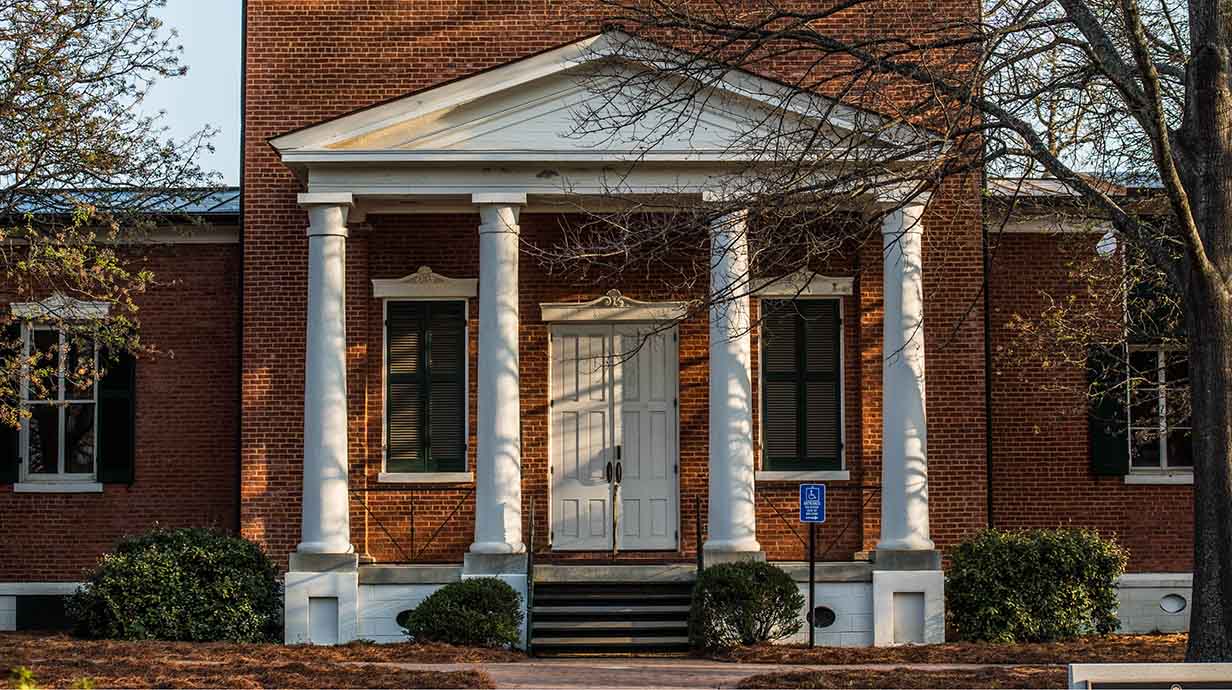
The Center for the Study of Southern Culture is the first regional studies center in the country. Interests of faculty, staff, and students are always changing, but include documentary studies, literature, history, religion, foodways, music, race and ethnicity, and globalization and identity.
The Blues Archive
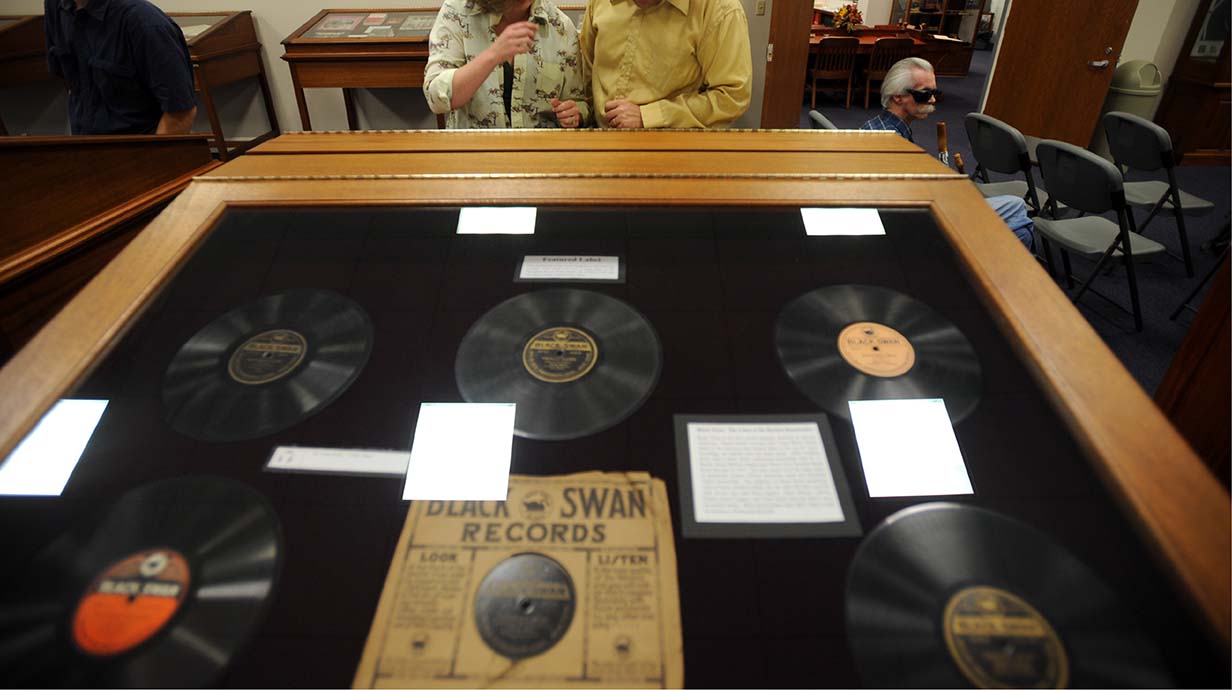
The Blues Archive at the University of Mississippi acquires and preserves blues and blues-related materials in a variety of formats for scholars and blues fans. The archive houses one of the largest collections of blues recordings, publications, and memorabilia in the world.
Gertrude C. Ford Center for the Performing Arts
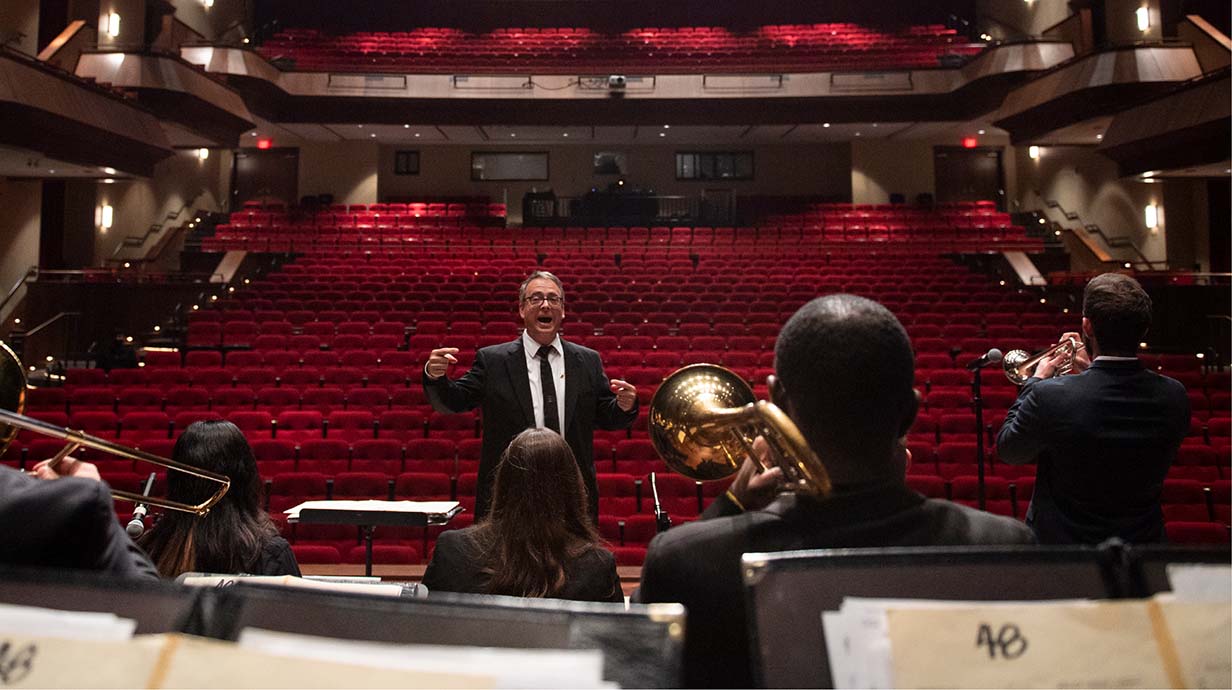
The Gertrude C. Ford Center celebrates imagination, innovation, and creativity through programming in the performing arts, public affairs, and the humanities.
